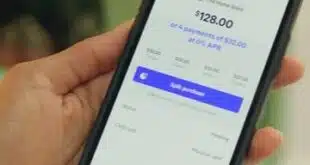Chargebacks represent the dark side of that giddy boom in online commerce touched off by the pandemic. But as Covid recedes, will disputed transactions follow suit?
E-commerce doesn’t always mean Amazon.
Think for a moment about the position your local independent eatery or hardware store found itself in just about a year ago. Accustomed to foot traffic and in-person transactions, proprietors of these places suddenly had to scramble to serve customers who were afraid to touch anything in the store—or even to come in the store.
Up against the effects of a deadly pandemic, owners and managers had to act fast to rig up online ordering and delivery services. That meant improvisation on a massive, national scale. And that also meant something these owners never bargained for: an explosion in chargebacks as opportunists charged goods and laid off the cost on someone else.
“Suddenly, they were inundated with chargebacks. They just weren’t used to dealing with that,” says Dan Stanbridge, vice president of global risk for the payment processor Paysafe Group.
Industries like travel and entertainment saw chargebacks take off as well with canceled airline trips and hotel stays.
Old-fashioned fraud also played a prominent role. Losses to identity theft—cases where anyone from a hardened criminal to your shiftless son-in-law hijacks your card account or opens a new one in your name—boomed in 2020, rising 42% to more than $700 billion. The process that follows when the victim discovers the fraud is a chargeback filing, and the merchant is typically on the hook to make good.
All in all, the shift to e-commerce was “a petri dish for fraudsters,” says Monica Eaton-Cardone, chief operating officer and cofounder of Chargebacks911, a Clearwater, Fla.-based company that helps almost 50,000 merchants defend chargebacks.
But career fraudsters using stolen identities account for probably no more than 10% of chargebacks, according to estimates by McKinney, Texas-based Chargeback Gurus, which helps merchants defend chargebacks. Most cases arise from casual or so-called friendly fraud, which snazzy technology like mobile apps helps enable by making a chargeback filing merely a matter of tapping an icon.
Expectation of same-day delivery—a standard set by companies like Amazon but hard for many smaller rivals to match— and easy repudiation also make for a volatile mix, even for big retailers, as consumers yield to the temptation to disavow purchases they actually performed. “We have to remain on high alert and continue to make more investments” in chargeback defense, says an executive with a major retail chain.
‘Double Dipping’
The payments industry has known for years that card-not-present transactions invite more fraud. It’s easier online to hide behind fake or stolen identities, and easier also for brothers, sisters, husbands, or wives to impersonate a sibling or spouse.
But the pandemic lent impetus to a relatively new scenario: online ordering with curbside or in-store pickup. It’s a popular option for both merchant and customer. Still, while consumers who are who they say they are generally get their goods even sooner, so do customers who “borrowed” a parent’s or sibling’s card.
This so-called friendly fraud is the bane of the industry. Until the onset of Covid, such cases accounted for 25% to 30% of all chargebacks, according to Nadir Kiem, senior vice president of operations at Vesta Corp., a specialist in fraud protection. Now, he says, that number is 48%.
Other estimates are even higher. Chargeback Gurus, for instance, puts the proportion at anywhere from 60% to 80% of all chargebacks. Even the large chains are bedeviled by this activity. “When you move into e-commerce, you open yourself to friendly fraud,” says the big-box retailer executive, who spoke on condition of anonymity.
For example, he says his company has recently seen an increase in chargebacks for goods not received. “It’s not that they didn’t receive the goods, it’s just that it’s not what they expected,” he says.
Not all chargebacks, of course, arise from such careless attitudes. Many small merchants venturing into e-commerce for the first time, for example, got burned after the pandemic set in. “Merchants were not ready, but they were forced to go online,” says Suresh Dakshina, president and cofounder of Chargeback Gurus. “They had a lack of resources and a lack of time.” But controlling and preventing chargebacks “isn’t set it and forget it,” he adds.
Nor were large and sophisticated merchants immune. Early in the pandemic, chargebacks poured in on airlines, hotels, entertainment media, gym memberships, and spas—all areas where fulfillment was difficult or impossible, Dakshina says.
“Throughout 2020 we did see an immense spike in dispute volumes related to disruption in travel plans,” adds Julie Conroy, research director for the fraud practice at Aite Group, a Boston-based consultancy. “It was incredibly painful for issuers and merchants alike.” Disputes, she points out, represent the first step toward the eventual chargeback.
What experts have seen, however, is that many chargebacks are simply no more than complaints or refund requests filed through the wrong channel. In some cases, this may happen simply because the customer finds the chargeback option easier. Even in some banking apps, consumers can begin the process with the touch of a button, Eaton-Cardone says. “It’s a competitive differentiator for many banks,” she adds.
Another twist of the knife comes when consumers request a refund from the merchant and also file for a chargeback with their bank in a maneuver Eaton-Cardone calls “double dipping.” In response, many banks have removed the chargeback option from their mobile apps, says Dakshina.
Consumers are generally unaware that chargebacks cost serious money, experts say. Banks impose fees on merchants that can amount to anywhere from $20 to $100 per chargeback, according to Chargeback Gurus. With operations costs and customer-acquisition expenses, the firm estimates the final cost can come to two to three times the purchase total.
‘Stung Twice’
Whether they stem from criminal activity, friendly fraud, or honest mistakes, chargebacks present an expensive problem. So merchants and card issuers are pushing back.
Visa recently began offering merchants the opportunity to avoid a chargeback by routing a refund through the chargeback system, according to Paysafe’s Stanbridge. “It will be interesting to see how that pans out,” he adds. Visa, which in 2019 acquired dispute-resolution specialist Verifi, did not make an executive available for this article by deadline.
Stanbridge warns, however, that merchants inclined to issue refunds should be careful to do so through the card network. In their eagerness to avoid a chargeback, some merchants have refunded customers via wires or checks, a move that can make it harder to defend a chargeback if one arises. “I saw cases where merchants were stung twice,” he notes.
To help substantiate transactions for forgetful consumers, Verifi also began offering a channel by which issuers can get a receipt of a transaction “to help jog the consumer’s memory,” according to Julie Fergerson, chief executive of the Merchant Risk Council, a trade group focused on fraud matters, and a former executive with Ethoca, a fraud-mitigation firm acquired in 2019 by Mastercard.
The description on the receipt can help establish that, for example, the consumer’s child performed the transaction or give more details of the transaction than the spare line of type on the monthly statement.
Another weapon in the battle relies on technology that connects merchants with issuers, allowing for a flow of data that can help establish in real time whether the person performing an online transaction is who he says he is. The specification, dubbed EMV 3-D Secure 2.0, comes from EMVCo, the standards body controlled by Visa, Mastercard, and four other global payments networks.
The new standard is seen as a big improvement on version 1.0, introduced as long ago as the early 2000s. That version annoyed merchants because it required consumers to leave the e-commerce site to perform authentication steps on a pop-up window. That problem was eventually smoothed out, but the clunky reputation dogged the technology for years.
But even with 2.0, fear remains that customers will abandon their carts, leading to reluctance by merchants to adopt the technology. “I’m consistently hearing less than 4% of card-not-present volume is going across 3-D Secure rails in the U.S. market,” notes Conroy. “The reality is, in the U.S. market, it would take a governmental mandate” to get close to universal adoption, she adds.
‘It Takes Manpower’
Unsurprisingly, experts differ on what to expect in the near future. The big-box store executive refers to a “trifecta” of rising e-commerce demand plus merchant apps plus issuer apps. All that tech, he warns, “makes it easier” to generate sales but also leads to more disputes and chargebacks. “People aren’t disputing with the merchant, they’re going straight to their bank,” he says, adding that technology has smoothed the way for those complaints to turn into chargebacks.
The key, he says, is “do everything you can to make the customer happy. We’ve made returning an item extremely easy within our app, so hopefully they don’t go to their bank.”
He warns, though, that the other half of the solution—dealing with disputes early on—is expensive, as it requires human intervention, and lots of it. “Unfortunately, it takes manpower,” he says. “The incoming volume has increased so much, we’ve added on [full-time equivalents], and in some cases we’ve just told the customer to keep the item.”
Vesta’s Kiem sees a half-full glass. “I do think chargebacks will subside, but I also don’t think [they] will return to the pre-Covid level,” he says.
Others are more optimistic. Chargebacks will remain a tricky problem, but some experts look for a moderation in volume as the economy returns to normal post-Covid and educational efforts divert consumers from filing for chargebacks as a first resort.
“This year we’ll see a continued calming of chargeback levels,” says Paysafe’s Stanbridge. After a tumultuous 2020, many merchants devoutly hope so.





